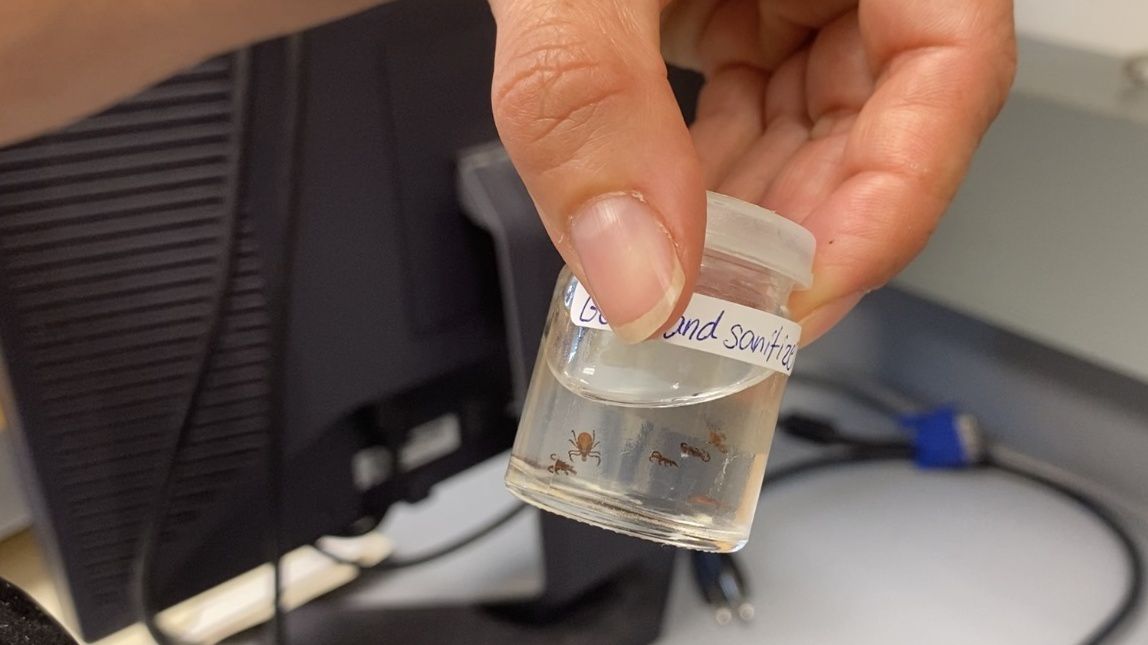There was some hopeful news this week in the fight against Lyme disease. Pfizer and Valneva are moving into phase 3 of their Lyme disease vaccine study after finding it demonstrated a strong immune response.
Around 6,000 people will participate in a study in the popular Lyme-disease regions of the U.S. and Europe. It comes as groups have seen a rise in global Lyme disease rates.
Scientists at the Cary Institute of Ecosystem Studies are studying ticks to learn more about the trend. But funding can be hard to secure. Some officials hope postage stamps of all things could help with funding.
New York, and especially the Hudson Valley, has become a hotspot for Lyme disease over the last few decades. After a drop during the height of the pandemic, when fewer people were getting tested for it, the Cary Institute’s Dr. Shannon LaDeau says Lyme remains a serious health risk around the state.
“Lyme disease is being detected in dogs and pets, as well as humans, in counties that have not historically been at high risk for Lyme infections,” she said. “It’s growing both in intensity locally, as well as spreading out across New York state and the region.”
LaDeau said what’s especially concerning is the increase of Lyme disease in urban environments. Checking for ticks is no longer limited to taking a hike in rural, tall-grass areas. Increased development has led to more interactions between deer and mice, which brings more ticks.
What You Need To Know
- A bill co-sponsored by Rep. Pat Ryan would increase funding for the National Institute of Allergy and Infectious Diseases
- The “Stamp Out Lyme Disease Act” would raise money by selling Lyme disease awareness stamps
- According to the EPA, Lyme disease rates have been steadily increasing, with the biggest increase in the northeast
“When you have ticks in more urban park spaces where mice are also doing quite well, then there’s real risk for for Lyme disease in parts of the state, in parts of the country that aren’t necessarily prepared for the surveillance and detection,” she said.
The research at the Cary Institute is critical to understanding more about the tick population and Lyme disease. It’s still a disease that can be deadly, or carry long-term side effects, with no vaccine.
That’s why securing dollars for research is so important.
LaDeau added that she can’t say much about the potential Lyme disease vaccine in development, but while she hopes it will be efficient, ticks do carry other diseases. So checking yourself for ticks will still be necessary, even with a vaccine.
Elected officials are looking at the U.S. Postal Service as a way to potentially raise more funds. Rep. Pat Ryan is co-sponsor for the Stamp Out Lyme Disease Act. It would create stamps about Lyme disease awareness, and the proceeds would go to the National Institute of Allergy and Infectious Diseases.
“This is the kind of scientific research that people sometimes take for granted, but we can’t take it for granted,” Ryan said. “We have to really fight for the funding to make sure that we’re continuing it and actually expanding it.”
LaDeau approves. Every little bit of funding counts.
“Lyme research, both from the ecological side and the human side, has been historically underfunded,” she said. “Any moves to increase funding and attention for Lyme disease are really, really important, both for this area, but increasingly for the bigger region.”

